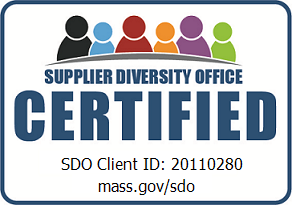If your organization is dealing with a crisis, chances are social media is involved in one way or another. While social media can be a powerful tool in providing important information in times of crisis, it can also inflame what is an already volatile situation. And sometimes social media is the origin of the crisis itself.
The role of social media in crisis management
Because of the fast-paced nature of social media, information (or disinformation) can spread like wildfire. If you act promptly and accordingly, you can often address the spread, both internally and externally. If you don’t, your organization might find itself in an even deeper crisis mode. At the same time, responding too quickly – without gathering all the facts first – can exacerbate the situation. Balancing these considerations is tricky, of course, so here are five tips to consider using while navigating a crisis online:

Social Media Crisis Management Tip #1: Monitor to stay ahead
As my colleague Philip Hauserman, Castle’s SVP of crisis communications, puts it, plan for the worst so you can be your best. The best way to deal with a crisis is to have a pre-constructed action plan outlining the ways in which you might respond in times of turmoil.
Social media monitoring plays a vital role in helping identify warning signs and potential issues before they become full blown crises. Regularly monitoring social media platforms allows you to detect emerging trends, identify potential concerns, and take proactive measures, such as drafting strategic holding statements and other communications materials. Flag and discuss what you’re seeing with your team and senior leaders to make sure they are aware of potential issues in real time. That way, if a crisis does occur, you are prepared and aren’t playing catch-up. The farther you are ahead of an issue, the easier it will be to navigate.
Social Media Crisis Management Tip #2: Determine your course of action
Once you have an idea of how the situation is unfolding, you will have a better idea on how – or if – you should respond.
One of the biggest challenges in addressing a situation on social media is the comment section, which gives people a forum to instantly discuss and criticize your message – and argue with each other. The last thing you want to do is create a public dialogue on the issue on your own social media page for all the world to see.
Nevertheless, if the crisis is already unfolding very publicly and quickly, you need to act fast, which brings me to my next tip.
Social Media Crisis Management Tip #3: Gather the facts, then respond ASAP
In the throes of an emerging crisis, you will likely feel the urge to respond as quickly as possible to control the narrative. But before doing so, make sure you have gathered all the facts. Nothing can inflame a situation quicker than an emotional response that doesn’t take stock of the situation in its entirety.
Assessing the facts of the situation before responding means ensuring your communications and senior leadership teams are looped into the unfolding situation and are comfortable with your planned course of action.
If the crisis is pressing and your organization does not communicate in a timely fashion with your stakeholders, rumors or false narratives may go unchecked and begin to spread. Don’t get caught flat-footed: Ensure your messaging is accurate, finalize your communications plan, and work quickly to get your statement out.
Social Media Crisis Management Tip #4: Do not go radio-silent
Determining whether to take a proactive or reactive approach to communicating about a crisis is one of the most difficult decisions organizations face. If you’re facing a crisis that has already spilled into the public view, your stakeholders may have questions and concerns that need to be answered – or at least acknowledged – promptly. In today’s world, silence can signal a lack of accountability and harm your reputation. Trust in a brand can take years to build and hours to erode.
Social Media Crisis Management Tip #5: Use social media as a form of two-way communication
A positive aspect of social media is that it enables easy communication between organizations and the public, allowing people to ask questions, express concerns, and receive both answers and reassurance directly. Social media also allows you to provide real-time updates, which keeps the public informed and is especially helpful in emergency situations.
Determine if and when to respond to individual posts and tweets, and ensure your message is consistent across social channels and also aligned with your organization’s overall message.
Create a social media crisis management plan to manage your organization’s reputation during a crisis.
Now that you know how to manage social media during a crisis, what’s the next step? What’s your message? There is never a one-size-fits-all approach to managing a crisis. Each crisis response is tailored to a different set of stakeholders, concerns, questions, and implications. Click here to learn more or reach out to our crisis communications team.















